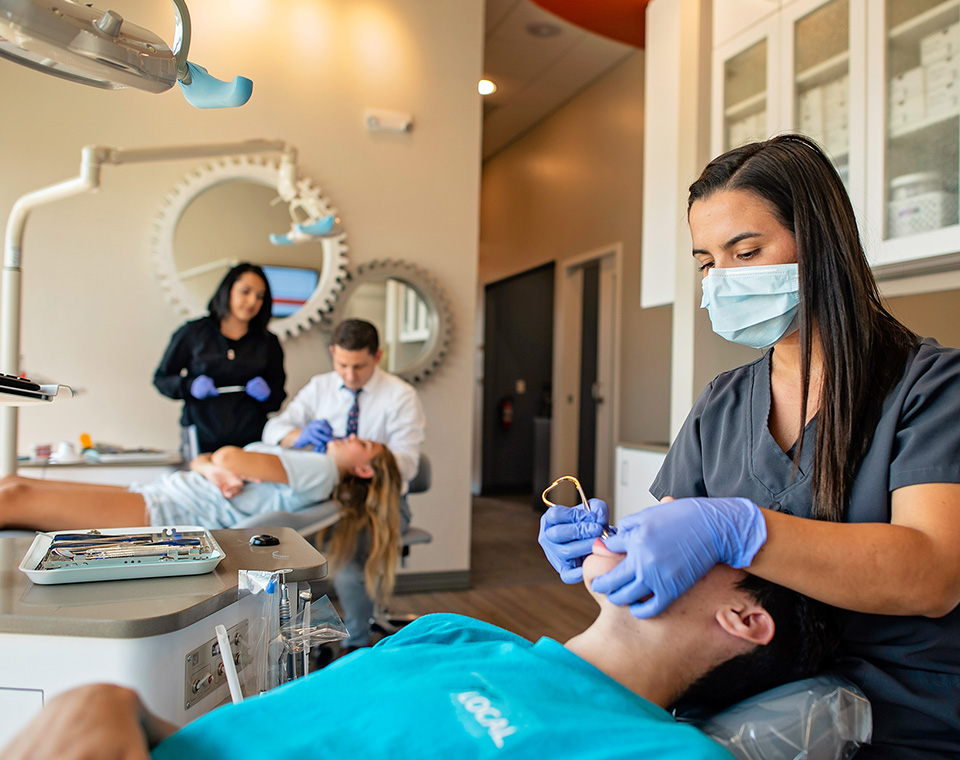What Are the Different Orthodontic Conditions and Jaw Misalignment Problems?

Everyone knows that orthodontic treatment is necessary if you want straight teeth and a beautiful smile, but why would people without an interest in the cosmetic side get any treatment at all? Well, the simple answer is to maintain their oral health and avoid painful or uncomfortable conditions. Lack of treatment for those who suffer from orthodontic conditions means a higher risk of tooth decay, speech impediments appearing, the bad or worsening appearance of teeth, and much more.
Here we’ll explain a few orthodontic conditions and their effects on the human body.
Orthodontic Conditions
Many patients go to their Orthodontist in Enid thinking they may have a singular condition that is causing some undesired effects when in reality, it is a mix of different malocclusions that the patient has that is causing the pain and discomfort.
Malocclusions occur when a patient presents misaligned teeth or jaws. There are many types of malocclusions as well as many reasons for them happening. From genetics to bad habits like tongue thrusting and thumb sucking, there are more than plenty of reasons for anyone to develop some malocclusion.
When your orthodontist detects a malocclusion, they will classify it in one of the three most common classes of malocclusion.
Malocclusion Class 1
Class one malocclusion is the most common type of malocclusion in patients and is the least severe out of all of them. According to Healthline, in class one malocclusions, the upper teeth, specifically the molars, tend to protrude forward over the lower counterpart, while the rest of the teeth are either overcrowded or have too much space between them.
Orthodontists dive the malocclusions in class one into three types. Type one, where the upper teeth lean inward. Type two, where the lower teeth lean inward while the upper teeth angle towards the lips. Finally, type three, where the upper teeth are not only leaning forward but are also crowded.
Malocclusion Class 2
Similar to class one, in class two malocclusions, the upper jaw and teeth overlap over the lower teeth. This type of malocclusion, however, is much more severe and noticeable. This condition usually appears in patients with a lower jaw smaller than usual.
There are two divisions inside this class. While division one refers to malocclusions where the upper teeth lean outward, division two refers to cases where the upper front teeth lean inward towards the tongue.
Malocclusion Class 3
Malocclusions in class three are opposite to classes one and two. Here, the lower teeth and jaws are the ones protruding forward, overlapping the upper jaws and teeth. Additionally, class three malocclusions can result from having a big lower jaw.
The class also divides itself into three types. In type one, the patient’s teeth will form a weir arch. In type two, the patient’s lower teeth lean towards the inside of the mouth. In type three, an arch also appears in the upper teeth, but they are also pointing towards the patient’s tongue.
How Do Teeth and Jaw Misalignments Affect You?
Previously we explained the classes of malocclusions. Now, we’ll explain the effects a few different types of malocclusions have on your body. It may surprise you that while the orthodontic conditions themselves reside in your mouth, they can affect different parts of your body. If you wish to stop or avoid them completely, you’ll have to undergo orthodontic treatment.
Overbite
Falling under class two malocclusion, overbite, also known as a deep bite, is a type of “bad bite” that is present in those whose upper teeth overlap their front lower teeth. Overbite can cause jaw pain, headaches, speech impediments, and difficulty eating and can even make patients prone to tooth damage and temporomandibular joint disorders (TMJ).
Underbite
Underbite, which falls into class three malocclusions, happens to around 10% of people and, aside from making the patient’s teeth prone to breaking and chipping, can cause excessive tooth wear and difficulty chewing.
Fortunately, an underbite is quite easy to deal with if the patient receives orthodontic treatment early on in their lifetime.
Crowding
As most people know, crowding occurs when a patient doesn’t have enough space in their jaw for all their teeth to erupt normally. Due to the added difficulty in maintaining oral hygiene, crowded teeth can cause gum disease and tooth decay. Additionally, it can lead to damage to the jaw joints.
Spacing
Spacing in one’s teeth can lead to premature tooth decay and tooth loss because of the added risk of bacteria and plaque accumulation. On top of that, spacing also leads to even more crooked teeth as the teeth are free to move around without anything stopping them.
Avoid Unnecessary Consequences
If you believe you may be suffering from any of the mentioned orthodontic conditions, schedule an appointment with us at Rose Rock Orthodontics. We’ll be happy to attend to you and your family for any orthodontic need you may have.


